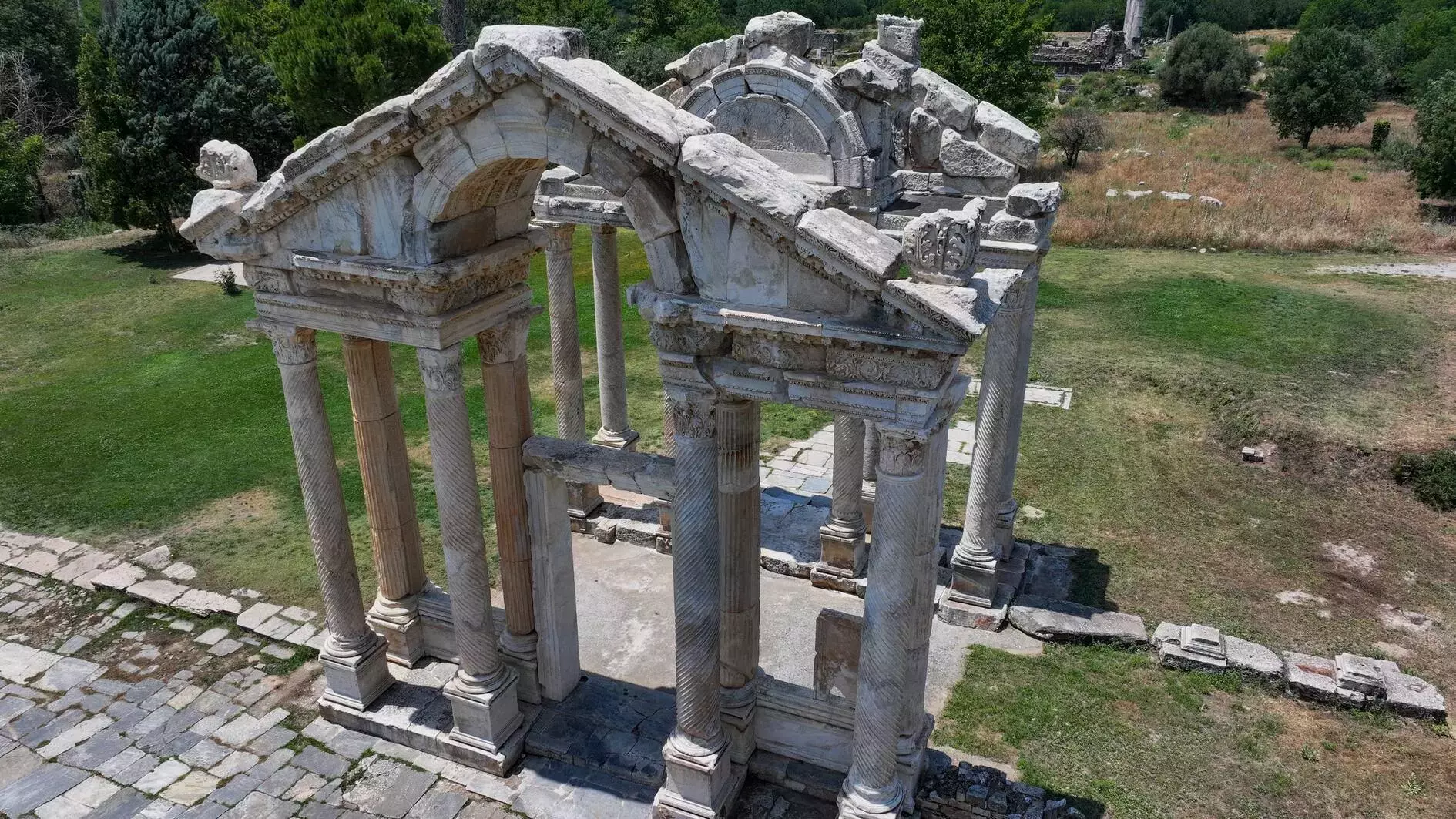Aphrodisias Undergoes Major Restoration to Welcome Visitors with New Features

The ancient city of Aphrodisias, dedicated to the goddess Aphrodite, is undergoing a broad restoration and development project aimed at improving visitor access and preserving its layered history. Located in the Karacasu district of Aydın province, the site is recognized as a UNESCO World Heritage Site and holds over two millennia of continuous settlement history.
Traces of Hellenistic, Roman, Byzantine, Anatolian beylik, and Ottoman cultures are present across the site, which is known for its temples, baths, theaters, and mosaic-covered spaces.
As part of the Turkish Ministry of Culture and Tourism’s “Heritage for the Future” program, excavation and restoration work is now active year-round. The initiative also includes infrastructure upgrades such as a new welcome center, expanded visitor walkways, upgraded public areas, and eventually, night-time access to the museum.
A new visitor facility is currently in the tender phase and is expected to open by the end of the year. Improvements to the Aphrodisias Museum itself are underway, with structural reinforcement projects scheduled for completion by 2027. Night-time access is planned to launch in 2026, pending the completion of related tenders.
A Three-Phase Development Plan
Professor Bahadır Duman, the project coordinator and an archaeologist at Pamukkale University, explained that the site’s transformation follows a three-part plan:
-
Excavation
-
Restoration
-
Infrastructure development
He highlighted the ongoing work at several key locations within the site, including:
-
The Ottoman Bath: This structure provides rare evidence of activity at Aphrodisias during the Ottoman period. After restoration, it will be accessible to visitors, helping to display the site’s diverse historical layers.
-
The Tetrastoon: Excavations here uncovered a series of connected shops and floor mosaics with geometric and plant-based designs. Restoration is ongoing, and the area is expected to open to the public later this year.
-
The Agora: Efforts are continuing to restore colonnaded galleries and marble flooring next to the theater.
-
The Theater Bath: Built in the 2nd century BCE and used until the 6th century CE, this large structure contained nine rooms with separate bathing sections. Modifications made in the 4th century show long-term use and adaptation over time.
“We are focusing on bringing these areas back to public view,” said Duman. “The goal is not just to preserve the past but also to ensure that its full historical range is accessible and understood.”